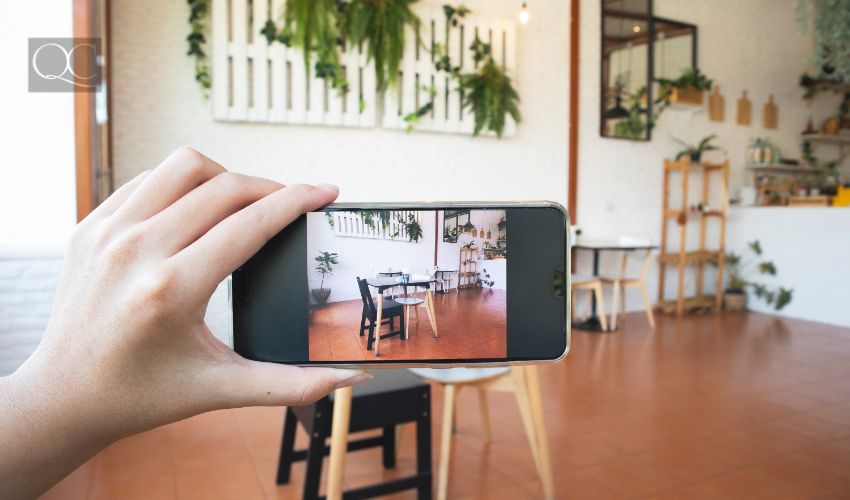Do you want to know how to become a professional organizer? Then you’ve come to the right place!
Chances are, you have a ton of questions about this new, exciting career path. Well, you’re in luck – because we’ve answered ALL of them for you, right here in this article!
So, sit back, relax, and put your feet up. By the time you’re finished reading, you’ll know everything in order to start the design career of your dreams!
Is There a Demand for Professional Organizers?
The good news is, your efforts will NOT be in vain! Interest in professional organizing has drastically increased on a global scale over the last couple of decades. In many ways, we have popular TV shows to thank for this.
Back in 2002, a UK reality program, “Life Laundry”, became a smash hit all around the world. This show focused on transforming cluttered homes and the lives of those living within them. Since then, pop culture has eagerly embraced many other TV shows of the same nature, such as:
- “Design Doctors”;
- “Minimalism: A Documentary about Important Things”;
- “Mission Organization”;
- “Bea Organized”;
- And in recent years, the global phenomenon, “Tidying Up with Marie Kondo”.
Post-COVID Demand for Professional Organizers
Professional organizers, in general, have been in high demand for years. Since 2020, the demand for organizers has only grown!
If you think about it, this makes perfect sense. Over the course of 2020, the majority of the world was confined to their homes during lockdowns. Naturally, this posed tons of new challenges.
For instance, those transitioning to a work-from-home lifestyle suddenly had to create home offices to accommodate their needs.
Then there were those who unfortunately lost their jobs and/or dealt with increasingly difficult struggles pertaining to mental health. While some stuck in their homes were able to thrive, others weren’t quite as fortunate.
All that time spent indoors was a real eye-opener, and it’s no surprise the world has come to see just how important it is to make sure our homes are comfortable, safe, and able to keep up with our demands.
What This Means for People Who Want to Become Organizers
This means now is the ideal time to get started as a professional organizer.
As life returns to the “new” normal, everyone is scrambling to find a subject-matter expert who can help them turn their house around, create the perfect home office space, de-clutter the mess that accumulated over 2020, etc.
There’s never been a better time to pursue a home design career path!

What Qualifications Do You Need to Become a Professional Organizer?
So now that you know just how sought-after your services will be as a professional organizer, it’s time to know what you sort of training you’ll need to work as one in the first place. And this is where things get a little tricky…
Technically, a proper education and certification are not required to work as a professional organizer. This is why some aspiring organizers choose to jump right into the industry without any prior experience. They have a natural eye for where things should go, and so they mistakenly assume that will be enough for them to be successful.
But this is where they’re wrong.
In reality, there’s a LOT more to professional organizing than simply knowing where to place things. You also need to thoroughly understand:
- How to provide exceptional customer service;
- Dealing with client conflict;
- The different types of clients and living situations you’ll be working with;
- Various factors that create organizational issues;
- How to produce home design plans through the use of floor plans;
- How to accurately read floor plans in general;
- The importance of balance and visual weight;
- Movable and fixed storage solutions;
- Fundamental organization principles and how to properly apply them;
- Strategic furniture placement;
- De-cluttering;
- And SO much more!
Just as important, you’re going to need to know how to successfully launch and run your own professional organizing business.
You can be the best there is at transforming a room – but if you don’t know how to conduct yourself, build your brand, develop contracts, and attract clients, your skill-set alone won’t matter much in the long run.
How to Become a Professional Organizer: The Importance of Certification Training
For all of these reasons, this is exactly why you should get properly trained and certified – even if it’s technically not required of you. After all, you want this career endeavor to be a success, right?
On top of the fact that professional training will make you a true industry expert, it’ll also benefit you for these additional reasons:
- You’ll stand out from your competitors (especially the ones who don’t have a certification to their name)!
- If your certification is internationally-recognized, you’ll potentially be able to service clients from all around the world!
- You’ll gain membership access to reputable design associations, such as POC (Professional Organizers in Canada) and ASPO (the American Society of Professional Organizers)!
- Proper training will better set up your business, as you’ll know how to accurately set service rates, write airtight contracts, provide top-notch customer service, build your design portfolio, etc.
- Through your school, you’ll be able to begin networking with other industry experts – which is a sure-fire way to open doors for job opportunities, referrals, and more!
Fun Fact: QC Design School meets ALL of the above criteria! Learn more about our accredited institution here!
How Long Does it Take to Become a Professional Organizer?
If you’ve asked yourself, “how do I become a professional organizer?” then you’ve probably also wondered how long it takes to become a professional organizer.
There’s no clear cut answer to this question. Ultimately, it boils down to you and the type of training you choose to pursue.
Firstly, you’ll need to decide whether you want to obtain your education through a brick-and-mortar or online school. Chances are, this will be the single key decision that’ll determine how long your training will take.
Here’s why…
Brick-and-Mortar Schools
Brick-and-mortar schools tend to offer set curriculums and timelines. They decide how long the program is, which days of the week classes are held, and the times these classes take place.
Furthermore, classes will be held at the institution itself. As such, it’ll be on you to meet their schedules, as well as get yourself to and from classes.
Another thing to keep in mind is that with brick-and-mortar schools, you’ll have no choice but to go at the same pace as everyone else. If the course is 6 months long, you won’t be able to graduate any sooner than that.
If a physical learning environment is where you thrive, this may be a small price to pay for you.
But if you’d prefer something a little more flexible and done on your own terms, then this type of schooling might not be the best fit.
Online Schools
Distance learning has been a popular option for quite some time. But over the course of the pandemic, it became THE most popular option for those looking to learn in a safe, convenient way.
If you want to be a professional organizer and start your career as soon as possible, then online schooling is the solution you’re looking for.
With the right school, your training will be done entirely at YOUR preferred pace. You can graduate and earn your certification in as little or as much time as you need!
Take QC Design School, for example. All of our internationally-recognized certification courses are 100% self-paced. There are no deadlines or rigid schedules to follow.
You get to decide when and how you want to focus on your studies.
To put it into perspective, many of our Professional Organizing graduates found that by simply devoting a mere 1-2 hours per week to their course, they were able to graduate in as little as 3-6 months (sometimes sooner).

How Much Does a Certified Professional Organizer Make?
Let’s talk about salary expectations. The first thing you need to know is that there’s no “one-size-fits-all” income for a professional organizer. How much money you make will depend on a handful of factors, such as:
- Where you live (i.e. a small town, a big city, etc.);
- Whether you’re booking clients full-time vs. part-time;
- Whether you’re working for an established company or running your own business;
- The efforts you put into marketing, client acquisition/retention, social media, your business website, etc.
- The types of professional organizing services your business offers;
- Whether or not you also offer other types of design services, etc.
That said, I can give you some general figures to help you get a better idea of potential salary ranges.
In Canada, for instance, PayScale reported that as of August 4th, 2021, the average annual income for professional organizers (based on 25 salaries) is $40,000 CAD, or approx. $35 CAD per hour. In the United States, Salary.com found that as of July 28th, 2021, the average salary for professional organizers is approx. $47,024 USD per year.
If you live in the United Kingdom, Glassdoor states that as of August 25th, 2021, and based on 13 salaries, professional organizers in the UK make (on average) £29,197 annually. That’s equal to approximately $40,239.16 USD. And if you reside in Australia, PayScale also reports that pro organizers earn an approx. hourly rate of $58.96 AUD – equal to $43.12 USD per hour.
The Added Value of a Professional Organizing Certification
Remember when we looked at all of the benefits of getting your professional organizing certification? Consider this another benefit to add to the list:
When you have a certification/designation on your resume, you can earn a better income.
Why is this? Because prospective clients will always prefer to work with a professional organizer who’s taken the time to earn their stripes.
Furthermore, when you get a proper education, you’re investing time, money, and effort into your craft. As a result, you earn the right to price your professional organizing services in a way that properly reflects that.
And if your design business offers other types of services, you can raise the rates for those services, too!
Not to mention, having a credible professional organizing certification will do wonders in terms of helping you stand out from the local competition, as I discussed earlier. And, of course, setting yourself apart from the crowd will not only elevate your business – it’ll definitely help you better your bottom line!
Alright, now that you know what it takes to be a professional organizer, how can you actually start your career as a professional organizer?
These 7 steps will walk you through the process!
Step One: Decide on The Type of Professional Organizer You Want to Be
If you wish to offer as many professional organizing services as possible, and cater to as many different client types as you can, then go for it! There’s absolutely nothing wrong with this option, and many prefer this route because of the endless possibilities it provides.
However, you can also find just as much success by honing in on a niche (or a few niches) for your business.
For instance, would you like to gear your services solely towards those with hoarding disorder? Is your passion organizing offices, rather than homes, or vice versa? Would you prefer to work in smaller living spaces, such as apartments, or strictly larger homes?
If you prefer to target specific areas of the home, such as closets, pantries, kitchens, bedrooms, etc., this can also be your niche. Another option could be to assist clients who are in the process of moving, or have just moved.
The beauty of this career is that there’s so much room for personalization. You can build your business in whichever way feels right for you, and tailors most to your key strengths, interests, and passions.
The great thing about this job is that there’s a market for every type of professional organizer. Don’t worry that honing a niche will somehow limit your booking potential. No matter what you choose to specialize in, there’ll be clients eager and ready to book with you!

Step Two: Learn How to Become a Professional Organizer Through Certification Courses
By this stage, it’s time to get properly trained and certified as a professional organizer!
QC Design School’s Professional Organizing Course is 5 units long and developed specifically to help you launch a fruitful, long-term career in the design industry.
Once enrolled, you’ll get a full 2 years to finish your program. But as I mentioned earlier, since it’s all self-paced, you can choose how much (or how little) of that time you’ll need.
Within 1-2 days of enrolling, you’ll receive your login details for QC’s Online Student Center. From here, you’ll have access to all of your digital course textbooks, instructional videos, quizzes, and assignments. But if you prefer having physical course materials to learn from, don’t worry! QC will mail those out to you as well, and you’ll receive them within 1-2 weeks.
Another perk of QC Design School’s professional organizer training is that your tutor is a real-world industry expert with years of experience. After you submit each unit, your assigned tutor will go through all of your work with a fine-toothed comb.
Afterwards, they’ll then submit your grades, along with thorough audio feedback to help you recognize where your current strengths and weaknesses are.
The best part?
Once you graduate, you’ll receive your Advanced International Organizing Professional (AIOP) certification in the mail, which you can then proudly showcase to clients. This title also serves as your official designation, which you can add to your resume!
Want to learn more about QC Design School’s Professional Organizing Course? Read the full course and curriculum breakdown here!
Step Three: Join Professional Association Memberships
Once you’ve graduated and earned your professional certification, it’s time to become a member of esteemed design associations within your field. Being a member of these associations adds even more credibility to your name. You can include your memberships on your resume, as well as proudly plug them on your social media pages and business website.
Furthermore, becoming a member can create networking opportunities with other members as well. And as we’ll discuss in Step Five, networking is CRITICAL in the home design industry!
Here are just some of the professional organizing associations you can join once trained and certified:
- Professional Organizers in Canada (POC)
- American Society of Professional Organizers (ASPO)
- National Association of Productivity & Organizing Professionals (NAPO)
- Association of Professional Declutterers and Organisers (APDO)
- Institute for Challenging Disorganization (ICD)
Fun Fact: As soon as you enroll in QC Design School’s Professional Organizing Course, you’re automatically eligible for a discounted membership with ASPO! Plus, you’ll be eligible for a membership with the POC as well!
Step Four: Give Away Freebies to Build Your Portfolio
“But wait, how can I hope to make money if I’m giving away my services for FREE?” you might be wondering.
Just stick with me on this for a moment!
Everyone needs to start somewhere. When you first begin your career as a professional organizer, you likely won’t have any projects under your belt. By extension, you won’t have much of a professional design portfolio either.
Until you have these things, it’s going to be challenging to book real, paying clients, because they won’t be able to see any proof of your abilities. There’ll be no raving testimonials for them to read or high-quality photos illustrating how great you are at what you do.
For this reason, providing complimentary services at the very beginning of your career is a smart business move – even if it isn’t a financially attractive one.
By providing free organizing services, you’ll be able to gather images to use in your portfolio. Furthermore, you’ll also be able to start gathering positive client reviews that can be used on your website, in newsletters, in social media posts, etc.
Plus, the people you service for free could wind up referring you to people they know, which could very well lead to paid jobs!
Here are a few suggestions for how you can provide freebies in order to build your portfolio:
- Offer professional organizing services to your closest friends and family;
- Use your own home to implement (and photograph) different organization and decluttering techniques you learned during your certification training;
- Take part in a stylized photoshoot;
- Lend your subject-matter expertise to a not-for-profit and/or charitable cause.

Step Five: Network with Other Professional Organizers, Interior Designers, and Realtors
Networking is – and I cannot stress this enough – going to be one of your single strongest assets throughout your career as a professional organizer. This is because the home design industry is a pretty close-knit community.
You’ll quickly find that it won’t take long for you to meet and/or become acquainted with the other organizers in and around your area. Moreover, you’ll also get to know contractors, suppliers, other types of designers, and real estate agents.
Trust me: ALL of these are people you want within your professional bubble!
Yes, this means even other organizers. While they’re technically your “competition”, they’re also your allies, too. It’s important for you to establish positive connections with others in the industry – and this includes your competitors.
Now, you might be wondering, “But why is it so important that I do this?”
Here’s why: whenever you network and build solid business relationships, you’re increasing your chances of getting referrals. Even other organizers can sometimes wind up sending clients your way, if their own schedules are completely booked up. So long as they trust that you’d do the same, if ever in their position, then they’ll always be willing to refer a prospective client to you.
In a nutshell, your career will be WAY more successful if you consistently network with other professional organizers, designers, and experts within the industry.
Need some networking tips? Watch this video by QC Design School Student Ambassador, Bradley Schlagheck, and learn how to network and find professional organizing jobs like a pro!
Step Six: Create a Website to Showcase Your Work
These days, we all live online. That means prospective clients are going to expect you to have a legitimate website for your professional organizing business. Yes, you can have social media accounts (and we’ll cover this in the next and final step), but in order to truly be successful, social media alone won’t be enough.
A proper website shows people that you’re the real deal and that you take your business seriously. But once someone clicks on your website, the meat and potatoes of it are what will really seal the deal. This is basically just a fancy way of saying, make sure your website is worth their time.
Firstly, you’re going to want to secure your domain name.
I strongly recommend keeping your domain the same as your registered business name, so as not to create any confusion amongst prospective clientele. From there, make a check list of all the different pages and information you wish to offer on your site. Pertinent information would include:
- An About Me pages, giving clients the chance to get to know you better as a person, as well as understand your qualifications and certification(s);
- Your contact information;
- A page where you list all of the professional organizing services (and other design services, if applicable) you currently offer;
- You can also list your prices, if you wish to include this info as well;
- A blog, if you so choose to add to one to your site;
- Your professional organizing/design portfolio;
- Client testimonials;
- Links to your social media channels;
- If you so choose, an option for clients to book with you directly from your site, etc.
Showcasing Your Professional Organizing Portfolio on Your Website
Your website will be the perfect place to showcase your past projects, so take advantage!
As a general rule of thumb, your website needs to be easy to navigate.
Visitors shouldn’t have to struggle to find relevant information about you/your business, nor should they be sent through a maze in order to have their frequently asked questions answered. In that same breath, if they find it too difficult to locate your design portfolio, you’ll likely lose the client before you’ve even had a chance to speak with them.
You can avoid this by making your portfolio easy to spot from the moment someone lands on your website. Place it right in the top menu and be straight forward with how you name that page link. “Portfolio”, “My Portfolio”, “Past Projects”, etc. would all be acceptable names, as they’d all tell the person exactly what to expect.
In terms of your portfolio images themselves, make sure that you only showcase images of the best quality. Blurry photos, selfies, poor lighting, and unattractive framing should all be omitted from your website. Potential clients want to see that YOU’RE the professional organizer who can help them achieve their goals.
So, when designing the layout and choosing the photos to use in your site’s portfolio page, make sure to keep this top of mind.
Marketing Your Website
Once your website is up and running, you can get creative about how you wish to promote it. Email marketing, newsletters, marketing ads, social media, etc. can all be used to bring more exposure to your site – and ultimately, your business.
One important thing to keep in mind, when it comes to your website, is SEO (Search Engine Optimization).
Ideally, when people in and around your area are searching online for professional organizing services, your website will be one of the first to pop up in their results. In order to achieve such a high ranking on search engines such as Google, you’re going to need to beef up your SEO.
There are all sorts of articles and documents you can read to better help you understand the ins and outs of SEO, but this Starter Guide by Google is definitely the one we recommend most.

Step Seven: Get on Social Media!
When combined, utilizing social media AND an official business website together will make you an unstoppable online force!
Everyone and their grandmother is on social media nowadays. By not taking part in this golden opportunity for maximum exposure, you’ll be severely limiting your career’s potential, not to mention your client reach.
Building Your Social Media Presence
So, do a little digging! Off the top of your head, I’m sure you can already think of more than a few platforms with heightened popularity. (I’m looking at you, Facebook, Instagram, Twitter, Pinterest, and TikTok!) But are there any others you might not have thought of?
Sit down and make a list of the main social media platforms you’d like to promote your business on. That’s always a solid place to start.
From there, you can get some inspiration to help you decide what you’d want your social media presence to look like. There’s no harm in checking out what other professional organizers are doing on social media, so long as you don’t plagiarize any of their ideas. You never know – their strategies could wind up inspiring something completely new and fresh out of you.
Just remember to keep your business’s brand in mind as well! You don’t want the vibe on your website to completely clash with the vibe your social media pages are giving off. Rather, everything should stay consistent and complement one another. And if your brand has certain colors or moods associated with it, don’t hesitate to work those into your social media platforms, too.
Maintaining Your Social Media Presence
Here’s the thing, though: once you establish yourself on social media, it won’t be time to wipe your hands clean and walk away forever. The only way to build your following and get your accounts seen by the masses is to continuously be present on your channels.
Here are 5 handy tips to help you produce the best possible content on a regular basis AND build your network (there’s that word again!):
Tip #1: Post regularly – but not too much.
When a new potential follower comes across your channel, they should be able to see right away that you post on a consistent basis. No one wants to follow somebody who’s been MIA for months. That said, don’t go overboard either. If you’re flooding your followers’ feed with a bajillion posts every day, they could quickly become annoyed and wind up unfollowing you.
Tip #2: Post at optimal times of the day.
Certain platforms, such as Instagram, can actually show you when your followers are most active, based on certain days and times throughout the week. By strategically posting during peak periods, you’ll be increasing your chances of followers engaging with your content.
Tip #3: Always be original.
Don’t simply share other peoples’ posts or work and expect that to get YOU clients. As much as possible, use your social media platforms as an opportunity to showcase your professional organizing projects, insights, and subject-matter expertise. And don’t be afraid every once in a while to get personal and make posts that allow your followers to get to know you better!
Tip #4: Engage with your followers, as well as others in the industry.
Whenever someone takes the time to comment on your posts or message you, ensure to reply back. It’s a small gesture that will go a long way! Moreover, peruse your platforms to find other professional organizers and designers. Follow their page, like their posts, and leave encouraging comments (again, just don’t go overboard with it). The more you engage with these other designers, the likelier they’ll be to follow you back and do the same.
Tip #5: Make use of scheduling apps.
Sometimes, life gets busy – or maybe you need a vacation. Either way, you should still be posting on your social media. This is where scheduling software can be your best friend! There are tons of options out there, but I personally recommend Later and Hootsuite, because those are the two I always use. This kind of software will allow you to schedule your posts in advance and/or post in bulk. As your bookings fill up and your professional organizing career takes off, scheduling your social media content in advance will save you a LOT of time!



